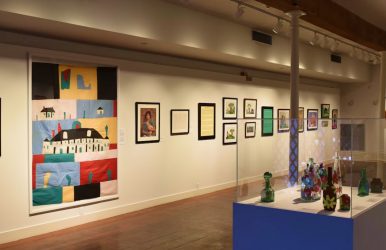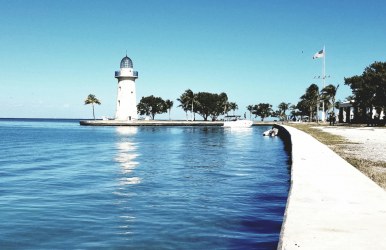The Top 10 Museums in New Orleans You Can’t Miss!
BY Ankita Mar 28, 2024
One of the things that most people who are into history and architecture ask me is: “Which place should I visit? Where will I get to see museums that will blow my mind?” And one of my staple answers is, “You know what? You must take a tour of the museums in New Orleans. They will blow your mind!” And yes, I mean it with my everything. You see, I am someone who is a sucker for great architecture. I love old buildings and the sheer magnificence and grandeur of them. Last year, when I visited New Orleans, one of the most important American cities, I had the opportunity to visit almost all the major museums in the city. Therefore, if you have been searching for the best museums in the city, I have you covered! Keep on reading this blog till the end to plan your travel bucket list… Best Museums in New Orleans That You MUST Visit! As I have already mentioned, New Orleans is a place that screams of old charms. The city houses some of the world-class museums. While you must have heard of some of them, like the World War II museum and the NOMA, these are not the only ones. But, if you like to have some quirky options, this place also has you covered. For instance, the Museum of Death and the Backstreet Cultural Museum are some of them. Wondering what they might be about? Well, to know that, you need to take a look at the following list of the best museums in New Orleans. So, without further ado, let us get started! 1. National World War II Museum The National World Way II Museum in New Orleans is definitely one of the most popular ones in the city. And there are reasons for it to be popular. Located in the Central Business District, this one offers a deeper dive into the tasks and contributions made by the forces of the United States in emerging victorious in the Second World War. While it is true that this museum covers it all, one of the major focuses of the building is on Operation Overload or the Battle of Normandy. https://www.instagram.com/p/C2vFumkP6FI/?img_index=1 With its vast collection of several original and replicas of the materials used in the war, the display boards of the museum offer an in-depth look at the war. Through the help of these replicas, the visitors can get a tangible view of the past and the contributions of the US Army. 2. Museum of Death https://www.instagram.com/p/CrTsbEaOJH4/ While it is true that this museum in New Orleans is not for everyone, it will be a great one for people with a dark sense of humor. Yes, you heard that right! The Museum of Death will appeal to those with macabre fascinations. The visitors are often amused by the building, which looks rather vulgar. Or, as Conde Nast Traveler rightly points out, the building “almost looks like a set of a B-movie with it garish colors and cartoon-like imagery.” https://www.instagram.com/p/C25YVbsR1zB/ So, what do you get here? All things gory. Serial killers and macabre art are what this museum is popular for. If you are a true crime fan, this is the place that will blow your mind. Just remember, when you are here, you MUST get something from the gift shop (no compulsion, though). Get yourself some morbid souvenirs from the gift shop, and thank me later! 3. New Orleans Museum of Art (NOMA) Thirdly, and probably one of the most important on the list, is the New Orleans Museum of Art, also known as NOMA. This Museum, as the name suggests, boasts a massive collection of objects that offers a range of artistic styles. With nearly 50,000 artistic objects, the prime focus of NOMA is French and American art, glass, and photography. Apart from that, African and Japanese works that showcase the periods and artistic styles of the places are some of the things that the visitors can explore. https://www.instagram.com/p/C4niRvyu-og/?img_index=1 And hey, once you are done exploring the museum, you can probably spend time with your friends and family at the Sydney and Walda Besthoff Sculpture Garden. This is a huge, lush green park with several sculptures all over. If you are looking for some outdoor art experience, this is something that you should look forward to! 4. Mardi Gras World https://www.instagram.com/p/B8zTC_BHlnH/ Of course, this HAS to be on the list, right? The Blaine Kern's Mardi Gras World, or simply the Mardi Gras World, is one of the most popular tourist attractions in the world. If you have ever seen the iconic floats of the Mardi Gras parades online and wondered where they make these things, this is the place you need to visit! THIS is where they are created. https://www.instagram.com/p/CFfDB_Sn_3p/?img_index=1 As a visitor, you can look at the creation of the beautiful and vibrant floats and the behind-the-scenes at the warehouse. Additionally, it also serves as a great tourist attraction because of its location. Its location near the Mississippi River makes it easily accessible to tourists. And if you are in the mood to click pictures for the Gram, the backdrop is a great option! 5. New Orleans Jazz Museum https://www.instagram.com/p/C1Xupy0s6jS/ Next on this list of the best museums to visit when you are in the city is the New Orleans Jazz Museum. This museum houses one of the most important buildings in the city, the New Orleans Mint. However, that is not the only significance that the museum holds. The building was used as a nuclear shelter. Moreover, it also served as the Analysis Office, which was a warehouse for the US Coast Guard. Now, you might be wondering why it is known as the Jazz Museum, right? https://www.instagram.com/p/C4WXWqHxWDK/ Well, in 2015, the museum started expanding its exhibits. It now includes several instruments that were once the property of significant and influential jazz musicians. You can find posters and photographs of the same. 6. Ogden Museum of Southern Art https://www.instagram.com/p/C1PeOHHuX-e/ If you are looking for a Smithsonian-affiliated museum, the Odgen Museum is the one you should visit. This one is exactly what the name suggests: a museum that not only showcases but also celebrates the culture and works of Southern artists. With nearly 5,000 pieces of work from several southern states, the Odgen Museum offers the world a great collection of Southern art. Some of its popular exhibits include photography, handicrafts, paintings, and sculptures. https://www.instagram.com/p/C4rHmIcP9VK/?img_index=1 Additionally, it also showcases works of both historical as well as contemporary artists from the South. You can also shop for art books and other artistic handicrafts that are pretty affordable. So, if you are a sucker for classic times, this museum should definitely be on your bucket list! Read More: Romance In The Big Easy: 20 Things To Do In New Orleans For Couples 7. Audubon Aquarium of the Americas The next one on this list of the best museums in New Orleans is the Audubon Aquarium of the Americas. This place is the home to a vast range of marine life. Located right on the banks of the River Mississippi, there are more than five hundred species of animals in this museum. The visitors to the museum can not only explore the animals but also learn about them and the rich biodiversity of the marine world. https://www.instagram.com/p/B-aGpzUBIm2 One of the best exhibits of the museum is the Mississippi River Gallery. This consists of several marine animals like alligators, catfish, and spoonbills. Apart from that, the Caribbean Reef and the Gulf of Mexico exhibits allow the tourists to observe other animals. 8. Contemporary Arts Center of New Orleans (CAC) https://www.instagram.com/p/C1pN-_ZOhpl/?img_index=1 Ever since 1976, this building has been the focal point of the Warehouse Art District. With several experiments on performance art, painting, music, theatre, photography, and more forms of art, the CAC or the Contemporary Arts Center is something you must visit when you are in the city. This museum was renovated in 1990, and its foundation dates back to the early 1900s. With its sleek modern galleries, studios, and warehouse spaces, the center is near about 30,000 sq. ft in area. Massive, isn't it? https://www.instagram.com/p/Cqx4dqvu1Dm/ If I have to name a few things, let me just say that the rotating visual arts exhibitions held here are one of the most important things you simply cannot miss! 9. The Historic New Orleans Collection The next one on this list of the best museums in the city is the Historic New Orleans Collection. And Just like its name suggests, this one is here to showcase everything historic about the city. Founded in the year 1966, the Historic New Orleans Collection is a free museum, a publisher for the culture and history of the city, as well as a research center. Located in the French Quarter, this museum is in the middle of a magnificent campus with nearly ten buildings on the property. https://www.instagram.com/p/BpM2JRsFIMY/ One of the most popular buildings that you can visit here is the Seignouret-Brulatour Building. For most people, this building is nothing more than a gateway to the actual museum. However, I saw great architecture and the fusion of the same with modern technology. 10. The Cabildo Last on the list is The Cabildo. This museum was once an important seat of the Spanish Colonial city hall. But with the change of time, it has now evolved into the State Museum Cabildo of Louisiana. Currently, it is a building that showcases the rich culture of the city’s history. Located right next to the St. Louis Cathedral, The Cabildo has transitioned impressively from being a place of governance. And the location of the museum makes it even more accessible for tourists to explore the heart of the city. https://www.instagram.com/p/BnymoAuDHqD/ At present, the monument preserves the history and significance of being the site of the transfer ceremonies of Lousiana Purchase which took place in the early 1800s. The visitors can get insights of the numerous ethnic groups from the times of the early settlement to the Reconstruction era. Wrapping It Up! In case you wanted to know about the best museums that you can visit in New Orleans, I hope that this blog has been of help to you. If you have any further queries, please feel free to let me know. All that you need to do is scroll down till you reach the end of the page. Then leave your comments in the box. And I will be there to answer them all for you! Read Also: Time Travelers’ Haven: Savannah’s Top Museums And Your Itinerary From Museums To Parks: The Top Attractions In St George Utah Explore The Top 15 Free Museums In DC! Must Visit Museums Understand More About The Vatican’s Museums











